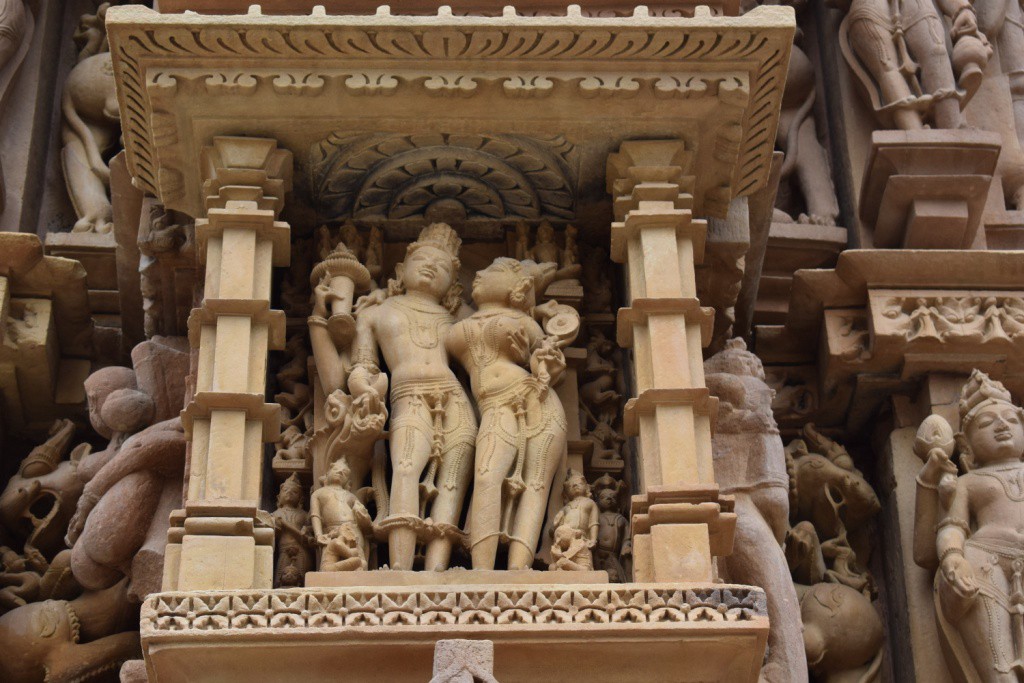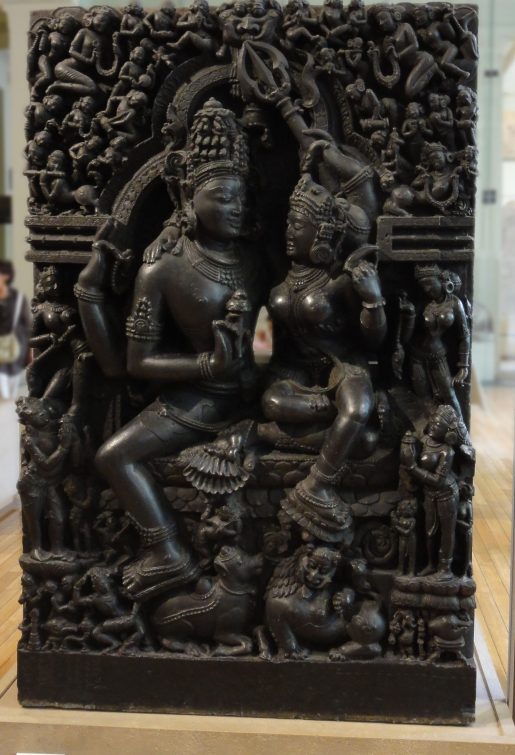Sculptures were one of the most favoured media of artistic expression in India. The subject matter of Indian sculpture is almost invariably religious based on legends and myths. The pivot of the early medieval sculpture is the human figure, both male and female in the form of gods and goddesses and their attendants.
Regional Variations in Style Of Sculpture
Medieval period (c. 8th–12th centuries) was marked by a large number of states and dynasties such as Pratiharas in the north, Palas in the northeast, Chandelas of north-central India, and Rashtrakuta in the Deccan, etc. Most of the dynasties of Medieval India followed Hinduism, though they also patronized Buddhism and Jainism. The consolidation of the Islamic empire took place only in the late twelfth century. However, due to their religious beliefs did not patronize the art of sculpture.
The style of Indian art sculpture is largely determined not by a dynasty but by region. Every region and period produced its distinct style of images, largely independent of any particular dynasty that happened to rule over a specific region.
Medieval Indian Sculpture in North India
Pratiharas

The Gurjara-Pratiharas had a vast kingdom that embraced the territory of Gujarat, Rajasthan, Uttar Pradesh. The surviving structural temples of the eighth and the ninth centuries in Central India and Rajasthan belong to the Pratihara style. This style is derived from the Gupta style albeit with some regional variations.
The Pratihara temple walls are decorated with a single band of sculpted niches, pillars with lotus designs, and elephants on walls carved beneath luxuriant scrollwork. Notable sculptures of this period include the Viswaroopa form of Vishnu and Marriage of Siva and Parvati from Kannauj, the image of Laksmi-Narayana, etc. Beautifully carved panels are also seen on the walls of temples standing at Osian, Abhaneri, and Kotah.
Chandelas

During the tenth and eleventh centuries, the Chandellas was the greatest power in Central India. They were great builders of temples and tanks, forts and palaces, etc. The Chandellas constructed towering temples in central India, like the Kandariya Mahadev temple and Laxman temple at Khajuraho. These were sculpted with human representations of endless variety. The sculptor here preferred the slender taller figures with a considerable accentuation of linear details.
The sculptures of Khajuraho are great masterpieces of Indian sculptural art. Khajuraho, the capital of Chandellas was a principal site of sculptural activity and was a high point of building activity. The Khajuraho temples are famous for their erotic relief panels which may illustrate the Tantrik practices of certain medieval cults.
In these temples, the many charms of the female body are revealed in most contorted and provocative poses. Geometric and floral designs, too, are abundant. Khajuraho’s sculptures are highly stylized with typical features: they are in almost full relief, cut away from the surrounding stone, with sharp noses, prominent chins, long slanting eyes, and eyebrows.
Medieval Sculpture in Eastern India
Sculpture in Eastern India has its distinct style of sculptural art though it shares a broad pattern of development with the rest of northern India. The figures in this region have a sense of mass and weight while the flatness of the plane is less prominent. This is seen in sculpture from Konark in Orissa.
The ninth-century was the most flourishing period for sculptural art in this region. The sculptural art had become much more decorative towards the tenth and eleventh centuries. In the 13th century, when sculpture in northern India had assumed a wooden appearance, the sculptural style in eastern India remained graceful. In Bihar and Bengal, the bronze sculpture was also developed during this time.
Palas
The style of the sculptures during the period between the ninth and eleventh centuries in Bengal and Bihar is known as the Pala style, named after the ruling dynasty at the time, while the style of those of the mid-eleventh to mid-thirteenth centuries is named after the Sena kings.
The Palas were Buddhists by faith and patrons of many Buddhist monastic sites. The ninth-century Siddheshvara Mahadeva temple in Barakar is an example of the early Pala style. The Pala Style is marked by slim and graceful figures, elaborate jewellery, and conventional decoration. Their sculptures from Bihar are somewhat thick and heavier in their general proportions of limbs than those from Bengal.
Medieval Sculpture in Western India
Solanki
Sculptures in western India and Rajasthan were highly ornate, with the Jain Dilwara temples of Mount Abu attaining a marvellous architectural perfection in stone. They were built by Solanki rulers. The Dilwara temples at Mount Abu are the outstanding productions of the western school in the Jain tradition. They are not monuments of architecture but are sculptural masterpieces. The ceiling of the Dilwara temple, especially, is one of the world’s masterpieces of intricate sculptural carvings.
The traditions of the marble sculpture of Gujarat in Western India are seen in the abundance of intricately carved sculptures that decorate the Jain temples at Mount Abu, Palitana, and Girnar. The beautiful image of the four-armed Vishnu, the Hindu god of preservation, was customized in the 13th century A.D.

